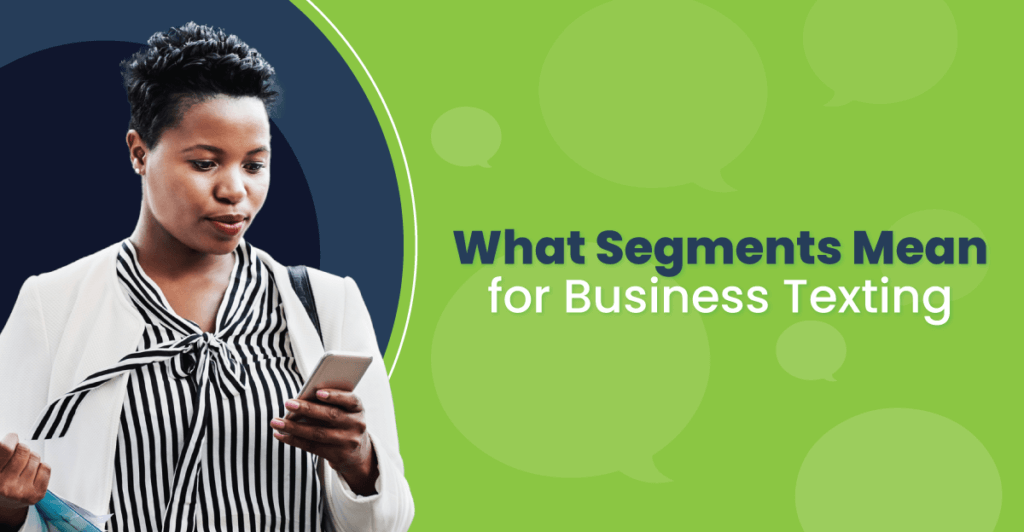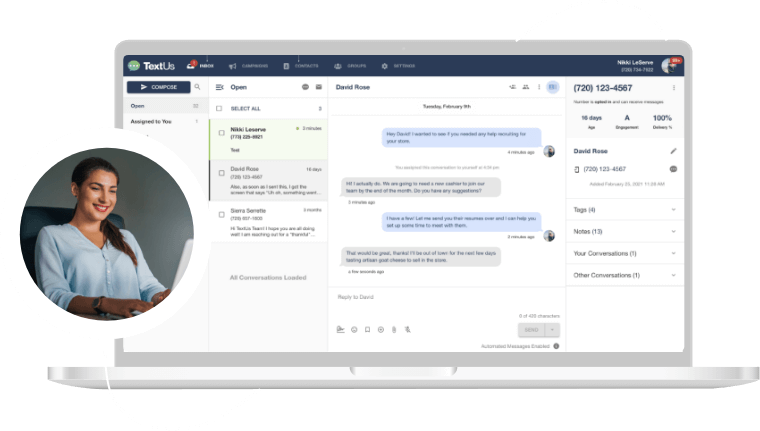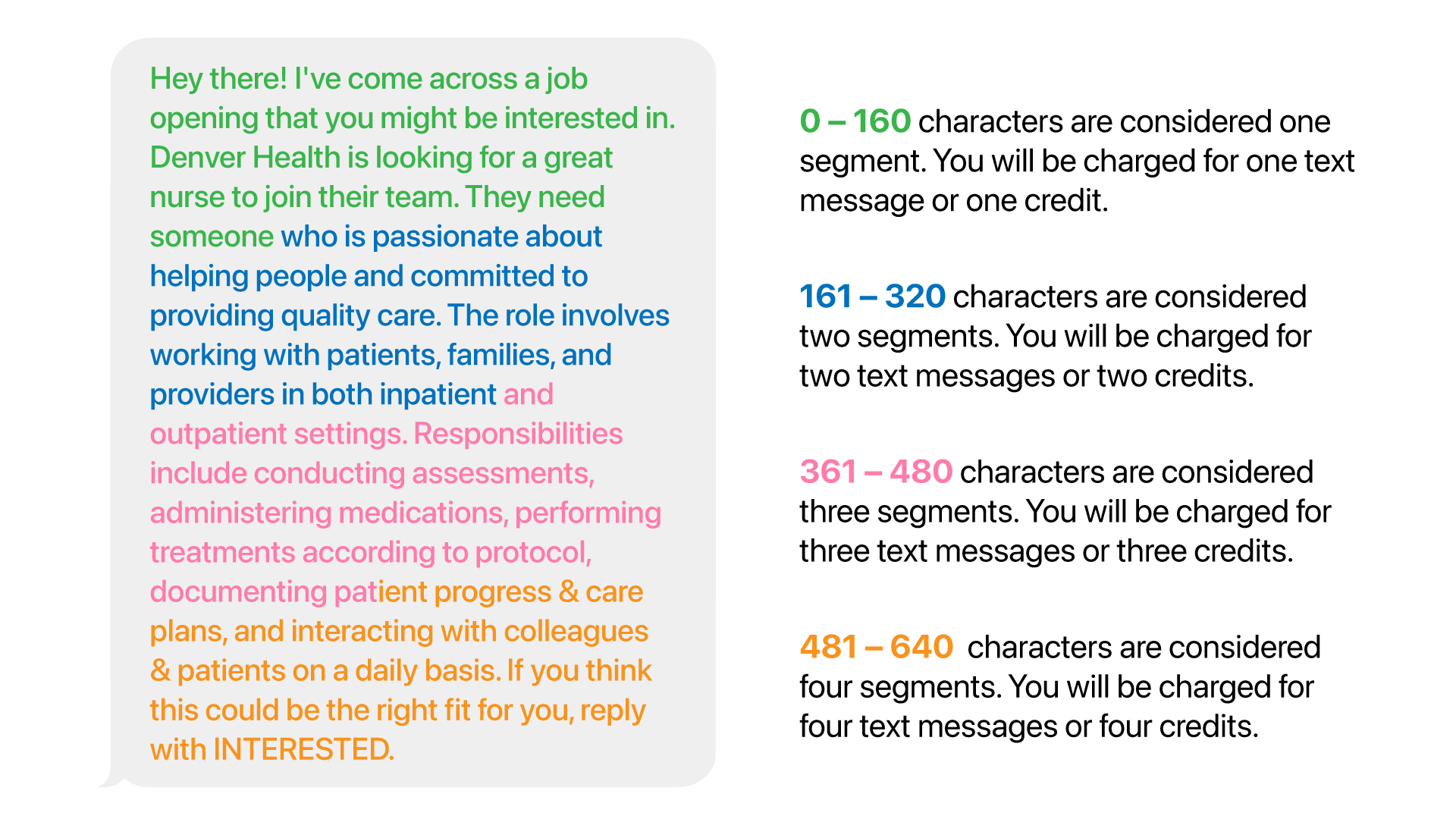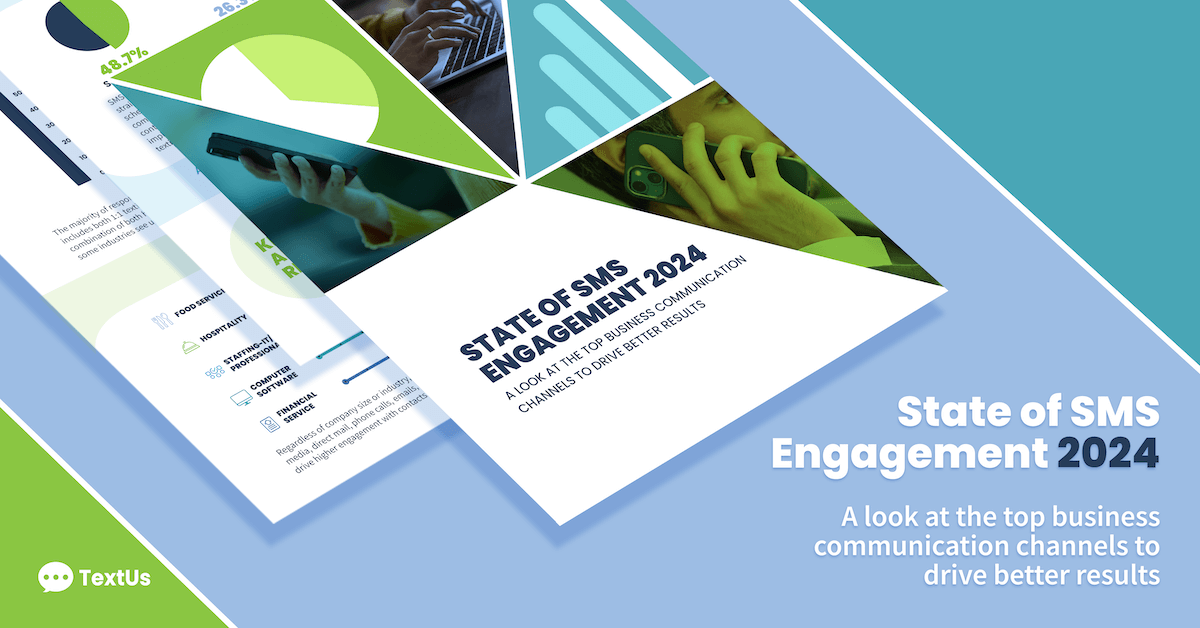What Segments Mean for Business Texting

When you hear the term segment, you may be thinking about a marketing segment — how you structure your marketing strategy and choose audiences with similar interests so that you can tailor communications. This article isn’t about those kinds of segments — BUT— there’s a good chance that you are using SMS marketing in your communication to segment your audience and deliver the best business text messages.
This article will tell you what SMS segments, also referred to as text message segments and SMS messages, are, how they impact your ability to send marketing campaigns, how you pay for them, and tips for creating the best text messages.
What is a text message segment?
When you send and receive text messages, you likely see one large text bubble regardless of how long your message is. This leads you to believe that since texting is so easy to do now — you have keyboard access from your laptop, desktop, or mobile phone — and you no longer have to hit a button three times to get the right letter (and then sigh with frustration when you hit too many times and have to delete and start all over) that it doesn’t matter how long your text messages are and you have no restrictions.
While technology has advanced and texting is easier than ever — the behind-the-scenes of how messages are sent and calculated have not evolved as much. Phone carriers use character size to determine how long a text message really is, but they are not all encoded equally. A message up to 1120 bits in size is equivalent to one SMS message, as determined by receiving carriers. For messages with no special characters or emojis, this is usually equal to 160 characters per SMS message. Messages larger than 1120 bits or longer than 160 characters are counted as multiple SMS messages depending on how many characters are used.
When emojis or other special characters are used within a message, roughly 70 characters will equal one SMS message or 1120 bits in size. This is because the message is transmitted by the provider with a different encoding that allows the receiving device to translate the data into an emoji. While this encoding makes emojis and other special characters possible, it also means that even normal characters are larger in size. Because of this, a message with an emoji needs 70 characters or fewer to remain within the 1120-bit size limit. Additionally, because emojis are larger than normal characters, they typically count as two characters towards that 70-character limit.
So what exactly are these codes defining the rules?!
- If you see GSM-7, this refers to the standard alphabet (A-Z and numerals 0-9 plus a few special characters) including up to 160 characters per SMS text segment.
- If you see UCS-2, this refers to fixed-width encoding and has a maximum of 70 characters.
- To make things even more complicated, data headers are used to send the message and stitch together so it views in one text bubble you are used to. Data headers take 6 bytes per message leaving only 67 characters for UCS-2 encoded messages or 153 for GSM encoded messages.
- So while the limit is 160 characters (think the size of a tweet — errr X) end users only see one text bubble. If you look at your phone bill, you will see those codes and how this works behind the text message bubble.
- What if you are sending rich media such as photos, PDFs, or GIFs? Each file you attach is an additional MMS (equal to 3 SMS messages) in addition to the body of the message.
How do you pay for text message segments?
If you are using a text messaging platform, there are likely two main ways you pay for the service. The first that some providers offer is paying as you go. This may mean you don’t have a long-term contract but you pay for your usage. If you aren’t sending large SMS campaigns or reaching out to many contacts, you may choose to pay as you go. This option generally uses credits that equate to segments. So if one segment caps at 160 characters, you would be charged 1 credit per segment, and could look like this to determine how much you will pay as you go per text message:
The other option some providers offer for business texting payment is to have a monthly plan or subscription. This generally entails a long-term contract and can use tricky language marketed as “unlimited” messaging since you aren’t technically paying as you go. But often this includes limits to how many text messages you can send (either through contact or campaign sends) depending on the type of plan or subscription you have. Make sure when evaluating SMS platforms you understand how many segments you will need, how many campaigns you want to send, how many contacts you want to reach, how many users on your end you want, and if you want to include MMS since some platforms eliminate the option to include MMS in your subscription.
Tips for SMS segments
Given the way text messages and segments are calculated, what can you do to help craft the best SMS campaigns?
- Use emojis wisely. Emojis are great because they can show tone and personality both of which help you build relationships. But maybe one emoji will do.
- Text like GenZ. If you are a millennial or older, you probably grew up learning how to type on a typewriter and did the obligatory two taps for a space after punctuation. This habit has stuck and many editors can even tell how old someone is because of it! That extra space eats up characters.
- Check your copy/paste. Just like if you copy text from a website and paste into a Google doc and see the formatting may need special attention, pasting into your text message platform could add extra spaces or characters not accounted for in GSM-7 meaning you’ll only have 70 characters to count for one SMS message.
- Prioritize. You may need to send rich media such as a PDF. If that’s the most important part of the text message and call-to-action, consider eliminating extra punctuation, quotation marks, and emojis.
- Use a text quality indicator. This feature can help you assess your tone, character limit and deliver the most optimal message.
- Use branded links. Links are another feature that may be a high priority for you. If you use them, make sure a built-in or branded link is used to increase credibility, limit character count, and skip any extra punctuation or rich media.
Talking about the different types of bytes, bits, and codes can get confusing! If you have any questions about how TextUs bills for segments or want to know the best SMS texting plan for your business, reach out to us today.

Get a TextUs Demo
Learn how thousands of businesses use TextUs everyday to communicate in real-time.





